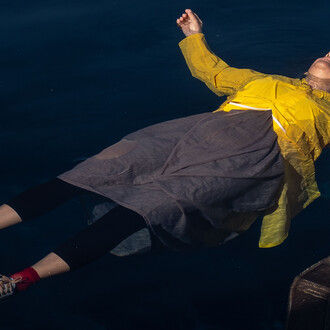On the yard of the Gyeongju National Museum, there are around 1,300 pieces of stone sculptures and works such as a belfry, stone pagodas, stone Buddha statues, memorial stone supports, and stylobates. Most of these have been transferred on to this site from old temple, palace and fortress sites in Gyeongju and the surrounding area. The most iconic exhibits include the Divine Bell of King Seongdeok (National Treasure), which is regarded as one of the most exquisite bells in the world, the Three-story Stone Pagoda at the Goseonsa Temple Site (National Treasure), which forms a dual wall with the stone pagoda from the Gameunsa Temple Site, and the Stone Statue of Standing Bodhisattva from Nangsan.
The Divine bell of King Seongdeok began to be fabricated by King Gyeongdeok, the 35th King of Silla, to honor his late father Great King Seongdeok, and it was completed by his son, King Hyegong, in 771. The top of the bell is in the shape of a dragon, below which there is a floral medallion and arabesque pattern, and underneath there are depictions of four heavenly maidens and two striking points of the bell (dwangja). At the lowermost part of the bell, there are reliefs of a floral medallion and arabesque pattern and lotus flowers. With an elegant appearance, exquisite reliefs and patterns and a beautiful and impressive bell sound, it is considered one of the finest masterpieces among the bells found in Korea.
Sumukdang Hall, which displays the hanok (traditional Korean housing) architecture style, and Gocheongji, a pond emanating a peaceful and tranquil atmosphere, have mainly been used as venues for the education programs and events run by the Gyeongju National Museum since 2007. Sumukdang and Gocheongji, which are namesakes of Sumuk Jin Hong-seop (1918~2010) and Gocheong Yun Gyeong-ryeol, have been given their names to honor them. Jin Hong-seop was an art historian, who served as the Director of the National Museum of Korea Gyeongju Branch, which was a precursor to the Gyeongju National Museum, from 1952 to 1961. Yun Gyeong-ryeol, who was born and raised in Gyeongju, was known for his lifelong dedication to promoting the culture of Gyeongju and Silla. These two founded Gyeongju Children’s Museum School in 1954 and instilled hopes and dreams in countless young children. Their legacy has been carried on to this day. Sumukdang and Gocheongji embody the beautiful and admirable spirits of Jin Hong-seop and Yun Gyeong-ryeol, who pioneered “museum education” in Korea.












